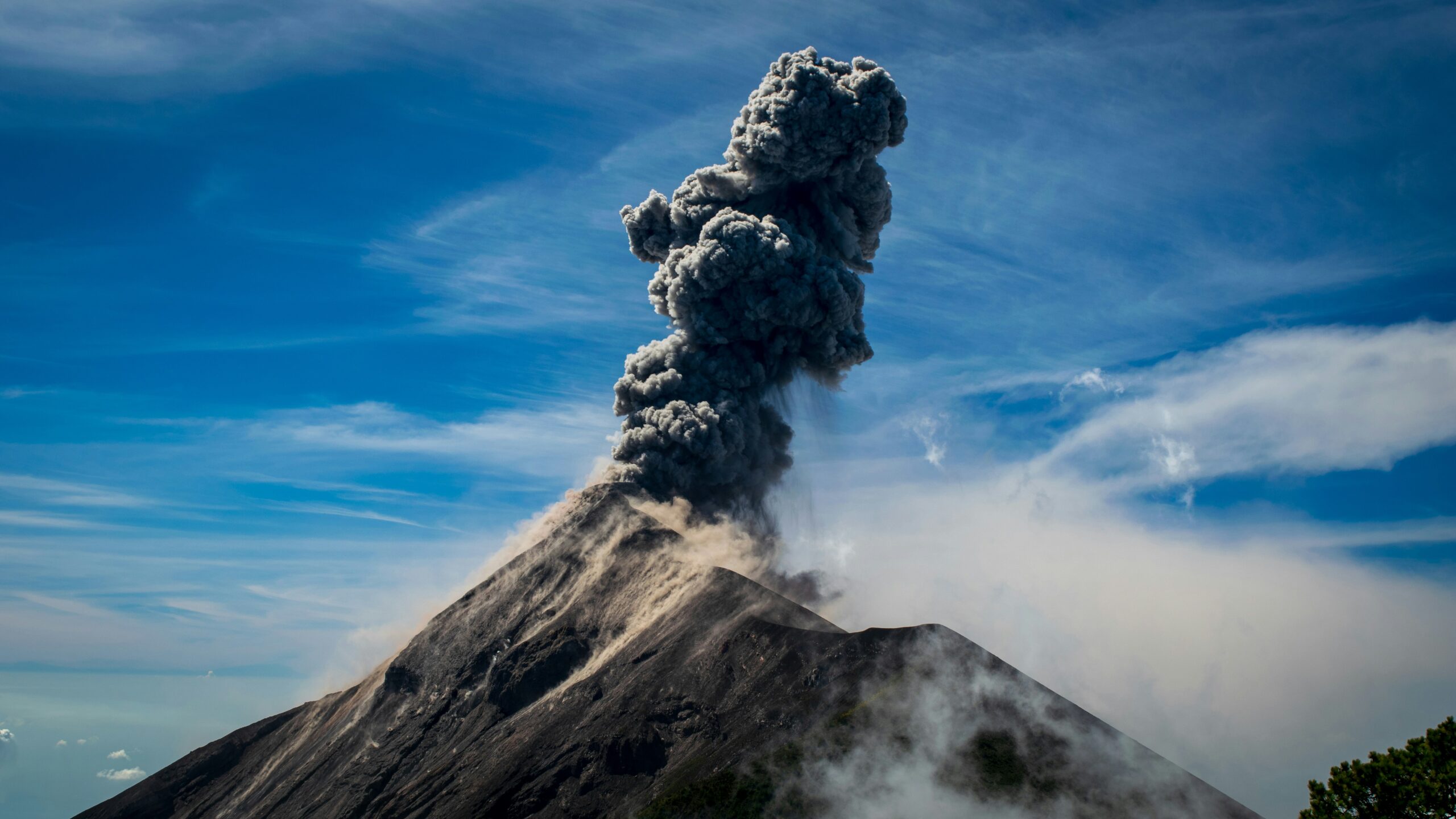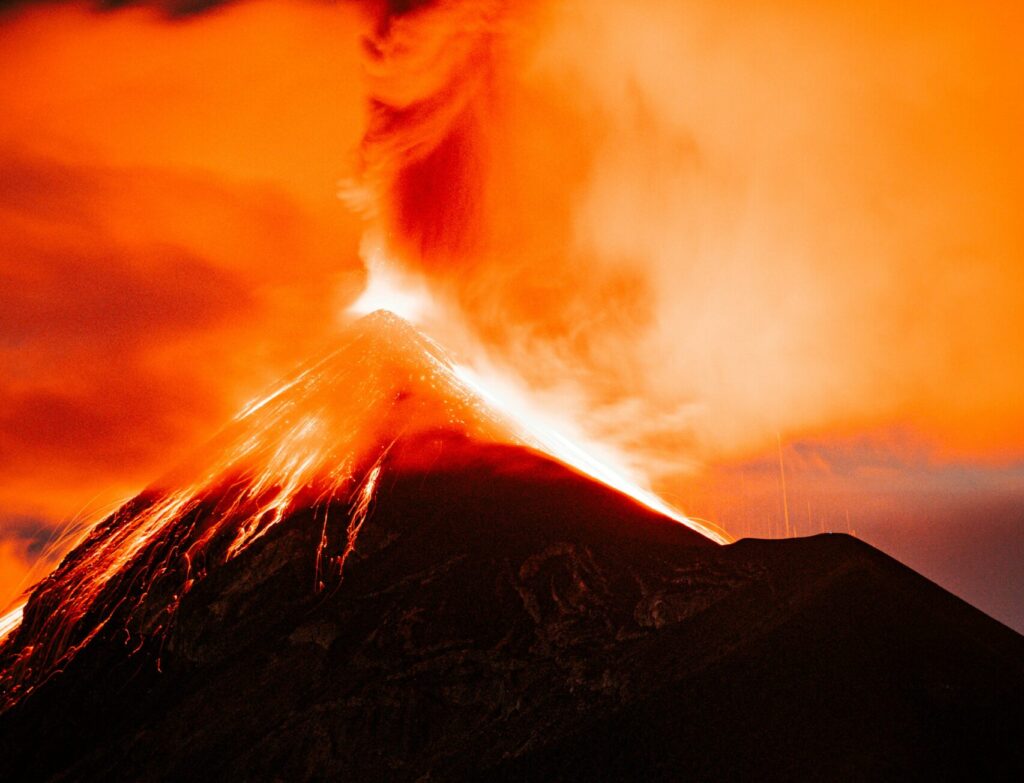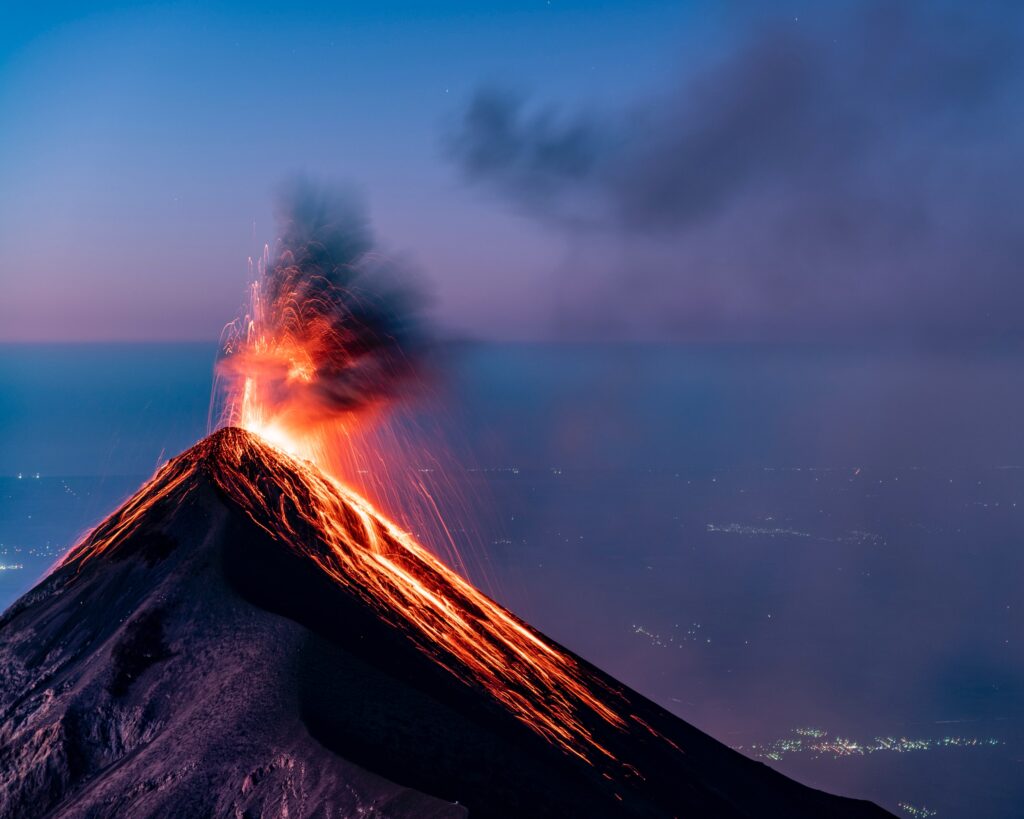
Exploring the Explosive Past of Fuego Volcano in Guatemala
Fuego Volcano in Guatemala has a fiery past, with frequent eruptions that have impacted the region for centuries. Let’s take a look at its recent eruptions, a timeline of these events, their magnitudes, and the impact they’ve had on the surrounding areas. We’ll also delve into some of the most significant historical eruptions, understanding their impact on the region.
Recent Eruptions
Fuego Volcano, located in Guatemala, is one of the most active volcanoes in Central America. In recent years, it has shown frequent volcanic activity, affecting nearby communities and the environment. Here’s a timeline of some of its recent eruptions:
June 3, 2018:
On June 3, 2018, something terrible happened in Guatemala. Fuego Volcano, which had been quiet for a while, suddenly exploded. The eruption was so strong that it sent hot ash, rocks, and gas shooting into the sky. This fiery mix rushed down the volcano’s slopes, destroying everything in its path.
It wasn’t just the eruption itself that caused so much damage; it was what came afterward. Thick ash filled the air, making it hard to breathe. It covered nearby villages, turning everything gray. Homes, fields, and roads disappeared under the ash.
The eruption was so powerful that it even reached Guatemala City, which was far away from the volcano. It felt like the whole country was under a dark cloud.
The impact was devastating. More than 200 people lost their lives, and many more were hurt or missing. It was one of the worst natural disasters Guatemala had ever faced.
November 19, 2018:
On November 19, 2018, the Fuego Volcano, in Guatemala, erupted again. It spewed out ash and lava, shooting up to about 1.7 kilometers high above the volcano’s crater. The eruption sent hot, fast-moving flows of gas and volcanic matter, called pyroclastic flows, down the slopes of the mountain.
Thankfully, no one was reported dead, but many nearby communities were worried. People had to leave their homes to stay safe. Also, because of all the ash falling from the sky, Guatemala City’s international airport had to close.
June 7, 2019:
June 7, 2019, was a day that shook Guatemala once again. Fuego Volcano, always unpredictable, unleashed another powerful eruption, shooting ash clouds soaring up to 6,000 meters into the sky. The impact was immediate and intense – Guatemala City’s airport had to shut down, disrupting travel plans, while nearby towns and villages were forced into emergency evacuation. It was a tense time, with people on edge, fearing the worst.
Thankfully, amidst the chaos and panic, there was a silver lining – no casualties were reported. But it was a stark reminder of the ever-present danger posed by Fuego Volcano. This wasn’t the first time it had erupted with such force, and it likely wouldn’t be the last. It served as a wake-up call, urging everyone to remain vigilant and prepared for whatever nature might throw their way. The resilience of the Guatemalan people was once again put to the test, and once again, they rose to the challenge, pulling together in the face of adversity.
February 14, 2021:
On February 14, 2021, the Fuego Volcano erupted once more, shooting out explosions and ash into the sky. This eruption was so intense that it forced the Guatemala City airport to shut down temporarily. People living nearby had to leave their homes for safety. Thankfully, there weren’t any reports of people getting hurt right away, but this eruption really worried both the authorities and the people who lived there.
The eruption sent massive clouds of ash shooting up to about 4,700 meters high. The ash fell on many nearby towns, making it hard for people to see and breathe. It was a scary time for everyone in the area.
These recent eruptions demonstrate the ongoing activity of Fuego Volcano and its potential impact on nearby communities and the environment. The frequent eruptions of Fuego Volcano highlight the importance of monitoring and preparedness in the region.
Historical Eruptions

Fuego Volcano has a long history of eruptions, some of which have had significant impacts on the region. Here are some of the most notable historical eruptions:
1541:
One of the earliest recorded eruptions of Fuego Volcano occurred in 1541. The eruption caused widespread devastation, with lava flows destroying nearby villages and agricultural land. The eruption had a significant impact on the local population, leading to the displacement of many residents.
1717:
In 1717, something really scary happened at Fuego Volcano. It erupted, and it wasn’t just a little boom—it erupted over and over again for months! Imagine huge bursts of lava shooting out, and thick clouds of hot ash rolling down the mountainside. These lava flows and pyroclastic flows, which are like super-hot avalanches made of rock and gas, wiped out everything they touched.
Now, imagine you lived nearby. You’d see your whole world changing right before your eyes. Villages disappeared under the burning lava, and thousands of people lost their lives. It was a really sad and scary time for everyone living close to the volcano.
1974:
Back in 1974, Fuego Volcano blew its top in a big way. It spat out fiery rocks and ash, creating what we call pyroclastic flows. These flows raced down the slopes of the mountain, wiping out everything in their path. It was like a massive bulldozer made of fire and rocks. The eruption caused a ton of damage and hurt a lot of people. Thousands lost their lives, and many more got hurt. It was one of the most devastating eruptions Fuego Volcano has ever seen.
These historical eruptions highlight the destructive power of Fuego Volcano and its ongoing threat to the region.
Conclusion
In conclusion, the Fuego Volcano in Guatemala has a long history of frequent eruptions, with recent events causing significant destruction and loss of life. The volcano’s ongoing activity serves as a reminder of the constant threat it poses to nearby communities and the environment. As scientists continue to monitor Fuego Volcano, it is essential for residents of the region to remain vigilant and prepared for future eruptions.
This is also the reason why hiking Acatenango is a safer option than risking hikes to Fuego volcano. If you’re keen on getting a closer look at Fuego, consider contacting Tropicana. They offer Acatenango tours, allowing you to observe Fuego from a safer distance. It’s an adventure that lets you experience the breathtaking beauty of Guatemala’s volcanic landscape without putting yourself in harm’s way.


 Previous Post
Previous Post Next Post
Next Post



